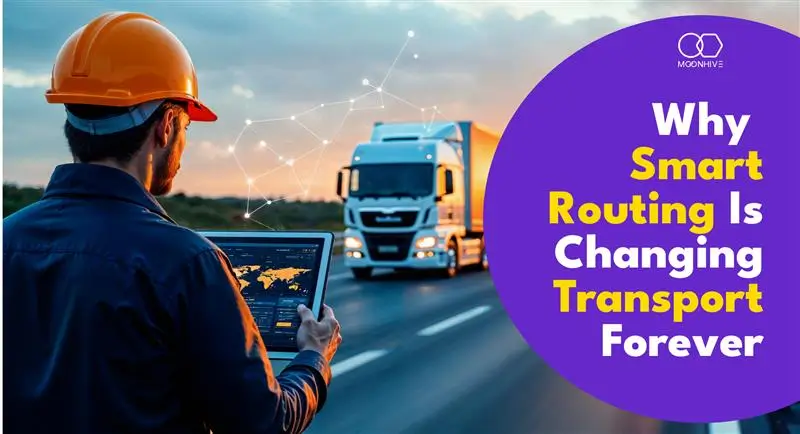Logistics is changing fast. Every delivery, shipment, and fleet operation now depends on data, speed, and digital intelligence. What once relied on static routes and manual planning is now driven by smart routing in logistics and fleet visibility tools the new backbone of modern transport and supply chain management.
From optimizing delivery routes to enabling real-time vehicle tracking, these solutions are redefining how goods move from Point A to Point B and how transport companies make smarter decisions every day.
Related Read: Startup Metrics 101: What Every Founder Should Track
Also Read: How to Build Your MVP the Right Way
What Is Smart Routing in Logistics?
Smart routing in logistics uses AI, algorithms, GPS signals, and live traffic data to automatically calculate the most efficient routes for vehicles. Unlike static planning, smart routing adapts in real time, considering:
- Live traffic congestion and delays
- Road closures, accidents, or weather disruptions
- Delivery time slots and customer commitments
- Driver behavior and fuel efficiency metrics
Businesses using dynamic route optimization report:
Up to 25% reduction in fuel costs
30% faster delivery times
Higher customer satisfaction through timely deliveries
Whether you operate a small fleet of vans or hundreds of trucks, the ROI of smart routing is undeniable.
Fleet Visibility: The Other Half of the Equation
While smart routing makes trips efficient, fleet visibility in logistics ensures companies have full real-time insight into vehicle location, driver activity, and shipment progress.
Benefits of strong fleet visibility include:
- Accurate ETAs that improve customer trust
- Lower failed or delayed deliveries
- Greater driver accountability and compliance
- Rapid response to emergencies or unexpected events
- Analytics on idle time, route deviations, and delivery performance
Think of it as a control tower for logistics operations providing both day-to-day visibility and long-term data for better planning.
Why Smart Routing Matters Globally
From UK logistics providers to construction fleets in the Middle East and e-commerce teams in Canada, the value of smart routing in logistics is universal.
However, regional conditions such as road infrastructure, traffic behavior, and local compliance laws mean that transport tech solutions must adapt to each market.
Planning to build a region-specific transport solution? Begin with an MVP tested under real-world local conditions. Book a free demo to explore your options.
How Startups and Enterprises Apply Smart Routing
In our earlier blog “The First 100 Users”, we highlighted how startups can test traction early. Fleet and transport SaaS startups can follow a similar approach by:
- Launching a minimum viable route optimization dashboard
- Partnering with local carriers or transporters for pilot runs
- Measuring KPIs such as fuel savings, delivery accuracy, and driver efficiency
The transport industry is ripe for digital adoption, especially in fast-growing regions like the UAE, South Africa, and the UK, where logistics efficiency directly impacts growth.
The Future of Transport Operations
The next decade will redefine logistics through electric fleets, IoT-powered sensors, and AI-based predictive models. Businesses that embrace smart routing in logistics and fleet visibility today will gain lasting competitive advantages:
- Reduced environmental impact with efficient routing
- Predictive maintenance to prevent breakdowns
- Lower insurance risks through safer driving data
- Increased profitability with optimized operations
explore: How to scale your MVP beyond validation in our upcoming series.
Smart routing in logistics and fleet visibility are not optional add-ons they are mission-critical for transport companies, startups, and enterprises expanding their operations.
Businesses that invest in these technologies now will reduce costs, improve delivery speed, and future-proof their supply chain strategies.
